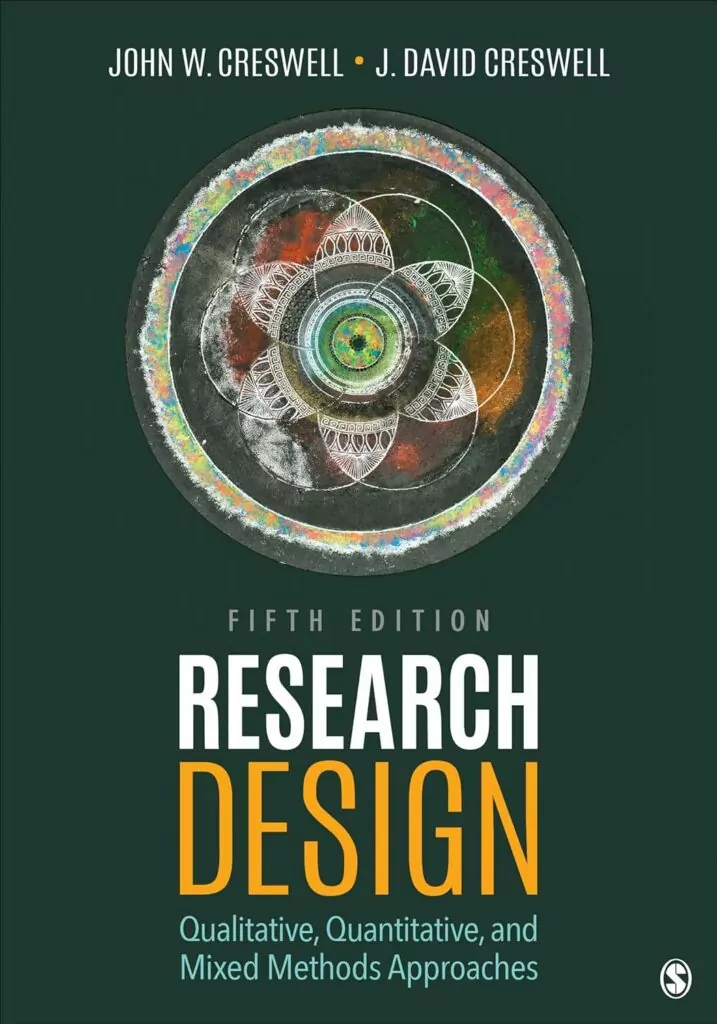In the realm of research methodology, John Creswell stands out as a seminal scholar, offering invaluable insights into the intricacies of research design. His book, “Research Design: Qualitative, Quantitative, and Mixed Methods Approaches,” has been a cornerstone in my doctoral studies and continues to be a go-to resource.

In this post, we’ll delve into Creswell’s perspectives on three fundamental research approaches: quantitative research, qualitative research, and mixed methods research. These methodologies form the backbone of academic research across various disciplines, and understanding them through Creswell’s lens provides clarity and depth to any research endeavor.
The primary purpose here is to answer key research questions as outlined by Creswell, to help demystify these approaches for researchers and students alike, drawing from the profound knowledge and structured guidance found in Creswell’s work.
Whether you’re a novice in the field of research or a seasoned academic, Creswell’s insights offer an invaluable guide in navigating the complex landscape of research methodology.
What is Quantitative Research According to Creswell?
Creswell (2014) defines quantitative research as
an inquiry into a social or human problem, based on testing a theory composed of variables, measured with numbers, and analyzed with statistical procedures, in order to determine whether the predictive generalizations of the theory hold true. The final written report has a set structure consisting of introduction, literature and theory, methods, results, and discussion. Like qualitative researchers, those who engage in this form of inquiry have assumptions about testing theories deductively, building in protections against bias, controlling for alternative or counterfactual explanations, and being able to generalize and replicate the findings. (p. 4)
Creswell’s definition of quantitative research is notably comprehensive and precise, encapsulating the essence of this methodological approach in social and human sciences. He emphasizes its foundation in testing theoretical constructs using measurable variables and numeric data, a process that inherently relies on statistical analysis to validate or refute predictive generalizations.
This definition highlights the structured nature of quantitative research, not only in its execution—where bias control, accounting for counterfactuals, and ensuring replicability are crucial—but also in its formal presentation, which adheres to a defined report structure (introduction, literature review, methodology, results, and discussion).
Creswell also draws attention to the underlying assumptions of quantitative research, such as deductive reasoning and the importance of generalizability, thereby underscoring the method’s systematic and empirical approach to understanding complex social and human phenomena.
For more definitions of quantitative research, check out my post entitled “what is quantitative research according to authors“.
What is Qualitative Research According to Creswell?
According to Creswell (2014), qualitative research is
an approach for exploring and understanding the meaning individuals or groups ascribe to a social or human problem. The process of research involves emerging questions and procedures, data typically collected in the participant’s setting, data analysis inductively building from particulars to general themes, and the researcher making interpretations of the meaning of the data. The final written report has a flexible structure.” (p. 4)
Qualitative researchers tend to highlight inductive processes, individual and social meanings, interpretations, and flexibility in reporting research results. Some strategies of inquiry that are mainly associated with qualitative research include ethnography, grounded theory, case studies, phenomenological research, and narrative research.
What is Mixed Methods Research According to Creswell?
According to Creswell (2014), mixed methods research is
an approach to inquiry involving collecting both quantitative and qualitative data, integrating the two forms of data, and using distinct designs that may involve philosophical assumptions and theoretical frameworks. The core assumption of this form of inquiry is that the combination of qualitative and quantitative approaches provides a more complete understanding of a research problem than either approach alone. (p. 4)
This definition of mixed methods research effectively captures the essence of this approach as a means of inquiry that synergistically combines quantitative and qualitative data. It highlights the fundamental premise that by integrating these two distinct forms of data collection and analysis, researchers can achieve a more comprehensive understanding of a research problem than would be possible through either method alone.
This approach not only combines different types of data but also potentially blends various philosophical assumptions and theoretical frameworks, which can offer a richer, more nuanced perspective on complex issues.
The definition underscores the importance of using specific designs tailored to the unique demands of mixed methods research, acknowledging the need for thoughtful integration of methodologies to fully capitalize on the strengths of both quantitative and qualitative approaches.
What is a Research Approach?
According to Creswell, research approaches are “plans and the procedures for research that span the decisions from broad assumptions to detailed methods of data collection and analysis”. (p. 247)
The selection of a research approach is informed by a number of key considerations including: the researcher’s own assumptions and worldviews, the nature of the research problem, strategies of research, methods of data collection and analysis, audience of the study, and more. There are three types of research designs: qualitative, quantitative, and mixed methods.
Creswell’s Book “Research Design”
John Creswell’ s “Research Design: Qualitative, Quantitative, and Mixed Methods Approaches” is a seminal book in the field of research methodology, revered for its comprehensive and practical approach to research design. The book is meticulously structured into two main parts: Part I, Preliminary Considerations, and Part II, Designing Research, offering a thorough exploration of the research process.
In the Preliminary Considerations section, Creswell lays the groundwork for research design. This part includes a nuanced discussion on selecting a research design, reviewing literature, the role of theory in research, effective writing strategies, and the vital aspect of ethical considerations in conducting research. This section serves as a foundational guide for researchers, helping them to understand the preliminary steps necessary for setting up a research study.
The second part, Designing Research, delves into the core elements of the research process. Creswell’s insights into crafting compelling introductions for research papers across various research methods – qualitative, quantitative, and mixed methods – are particularly valuable. He also covers critical components such as purpose statements, research questions, and hypotheses, offering readers a clear blueprint for structuring their research.
Throughout the book, Creswell focuses on the three main research designs: qualitative, quantitative, and mixed methods. He provides a detailed conceptualization of these methods, including the theories and philosophical assumptions underpinning each approach. His balanced view on these methods empowers researchers to choose and implement the most suitable approach for their research questions and objectives.
Creswell also emphasizes the importance of rigor and quality in research. He proposes specific evaluation criteria for qualitative, quantitative, and mixed methods research, ensuring that studies maintain a high standard of scholarly rigor.
Overall, “Research Design” by John Creswell stands as a vital resource for researchers across disciplines. It offers both theoretical frameworks and practical guidance, making it an indispensable tool for anyone engaged in research, from graduate students to seasoned academics. Creswell’s book is not just a guide to research methodology; it’s a comprehensive manual for conducting high-quality, impactful research.
Final thoughts
In conclusion, John Creswell’s “Research Design: Qualitative, Quantitative, and Mixed Methods Approaches” stands as an indispensable guide in the field of research methodology. Creswell’s detailed exploration of quantitative, qualitative, and mixed methods research not only clarifies the distinct characteristics of each approach but also illuminates their respective strengths and applications.
His book serves as a comprehensive resource, adeptly guiding researchers through the complexities of choosing and implementing the most appropriate methodology for their specific research questions. The insights gleaned from Creswell’s work are invaluable, whether for a student embarking on their academic journey or a seasoned researcher seeking to refine their approach.
As someone who has greatly benefited from Creswell’s work throughout my doctoral studies and beyond, I can attest to the enduring relevance and utility of his teachings in the pursuit of scholarly research. Creswell’s work not only instructs but also inspires, encouraging a rigorous, thoughtful, and ethical approach to the quest for knowledge.
References:
Creswell, J. W. (2014). Research design: Qualitative, quantitative, and mixed methods approaches. Thousand Oaks, CA: SAGE Publications.






